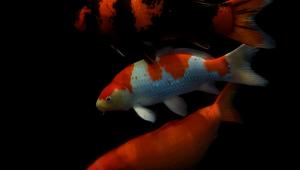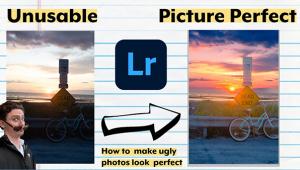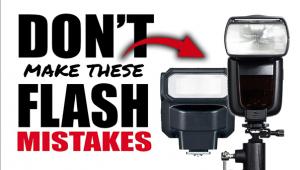Digital Help
Q&A For Digital Photography
Digital Help is designed to aid you in getting the most from your digital photography,
printing, scanning, and image creation. Each month, David Brooks provides solutions
to problems you might encounter with matters such as color calibration and management,
digital printer and scanner settings, and working with digital photographic
images with many different kinds of cameras and software. All questions sent
to him will be answered with the most appropriate information he can access
and provide. However, not all questions and answers will appear in this department.
Readers can send questions to David Brooks addressed to Shutterbug magazine,
through the Shutterbug website (www.shutterbug.com), directly via e-mail to:
editorial@shutterbug.com
or fotografx@mindspring.com
or by US Mail to: David Brooks, PO Box 2830, Lompoc, CA 93438.
Fine Points Of xD-Picture Cards For Fuji And Olympus Cameras
Q. I read the Test Report in the April 2006 issue of Shutterbug about the different
speeds and performances of CompactFlash and SD cards, which was very well written.
I was then looking for a new xD-Picture Card for my Fuji camera and noticed
that some are marked as 512MB, 512MB M, and others, 512MB H (Olympus brand).
I think I read somewhere that the M stands for multi layers and allows the card
to hold more than 512MB. What does the H mean and do the M and H affect the
speed of the cards compared to the original type xD-Picture Card? Are all the
cards basically the same with just a different brand name on it? I have yet
to find any documentation that says the exact write and read speeds of any xD-Picture
Cards, leading me to believe they are all the same.
A. As this referred to Peter Burian's article on memory cards,
and he is much more knowledgeable on the subject, I referred the question to
him. Burian's response follows:
What Is Standard Type xD?
The xD-Picture Card is an ultra-compact memory media that has been developed
jointly by Fuji and Olympus and was introduced in 2002. The name "xD-Picture
Card" was derived from "eXtreme Digital" and was chosen to
reflect the excellence with which the format would be able to record, store,
and transport audio-visual information. The standard xD-Picture Card writes
at 3.0MB/s and reads at 5.0MB/s.
What Is Type M?
The Type M xD-Picture Card was released in late 2005 and uses Multi Level Cell
(MLC) architecture to achieve higher storage capacities. The Type M xD-Picture
Card suffers some compatibility issues with older cameras (especially video
recording). The Olympus card has marginally slower read/write speeds than their
standard card and writes at 2.5MB/s and reads at 4.0MB/s. The Fuji Type M xD-Picture
Card has identical operating specifications to the standard Fuji card.
What Is Type H?
The Olympus Type H xD-Picture Card can attain write speeds of up to 2-3 times
faster than the standard or Type M xD-Picture Cards. Speed is dependent on the
camera's on-board controller and shooting modes. The Fuji Type H xD-Picture
Card uses different methods of digital encoding but has identical operating
specifications to the standard Fuji xD-Picture Card.
xD-Picture Cards Type M and H enable high storage capacities to be achieved
at lower cost per megabyte. Using new, compressed methods of digital data storage,
higher capacities are achievable with minimal impact on read and write times.
Types M and H use different methods of digital encoding, however, their identical
operating specifications make them fully interchangeable.
--Peter Burian
Continuous Flow Bulk Ink Printer Systems
Q. I have been seriously interested in one of the two available Continuous Ink
Systems (CIS) for printing, but can find nothing on the web, in newsgroups,
or in magazines like yours about how well they work, how safe they are for the
life of the printer, etc. I use a Canon i9100 (dye-based ink) and would love
to go this route, for the price of inks is something like supplying gas for
a very large SUV (which I don't do). Could you take a look at the available
systems and print your findings? I did note that some of the very large prints
currently on display at the Eastman House (Rochester) used or credited Lyson
inks, so some photographers are using them for serious purposes. There is also
the issue of these CIS systems using pigment vs. dye-based inks.
All in all, I think some kind of review might be worthwhile.
Gene Endres
A. I have tried continuous flow bulk ink systems twice with desktop
printers. In both cases I soon abandoned using them, and at a considerable loss
in the investment made. In addition, I have become aware from feedback from
users that those who do use them with satisfaction are people who are doing
large numbers of prints and are using the printers involved almost daily.
In all cases I have had experience only with Epson printers and also those who
have reported back to me their experiences with Epson printers. The Canon printers
involve a very distinct, replaceable print head, which may be both an advantage
and a disadvantage. Canon's Bubble Jet print heads also do not readily
support the use of pigment inks, except possibly their newest PIXMA Pro9500
that is designed to use pigment inks. In other words, with Canon printers I
would hesitate commenting further because I do not have personal experience
with them with continuous feed ink.
From the feedback I have seen, as well as data on some websites, continuous
flow ink supply systems do require quite a bit of maintenance--but that
may be in part due to the fact that many who do use them are doing a large volume
of prints. If your main concern is cost, there are other solutions if the amount
of printing is moderate. And that is using the latest ink cartridge designs
that do not have an internal sponge and include a poppet valve. These can be
refilled from bulk ink quite effectively, if the chip is
re-programmed.
I would suggest one of the more reliable, quality suppliers; one with good informational
support on their website is MIS Associates, Inc. at: www.inksupply.com.
Also, if the number of prints being made is quite large, you might consider
investing in a professional printer that uses a very large cartridge ink supply
system. What I would choose if quantity print production were an issue and I
wanted to reduce ink cost while maintaining reliability, high print quality,
and archival prints would be Epson's Stylus Pro 4800 printer, which will
use 220ml ink cartridges. These will produce a high number of prints per cartridge
set and lower per print costs.
Got A New Digital Camera And Photoshop Does Not Open The Raw Files
Q. I can't get my raw images to open up in Photoshop Elements 3.0. I have
a Canon EOS Digital Rebel XT and I download with a card reader. The file extension
is CR2, e.g., Img_7245.CR2. I can view the photo on the camera's LCD screen.
I get an error message on the computer--it says invalid file. I double
click in Explorer and still get the same error message. What are your thoughts?
Sheila Corbin
A. What you need to do is to obtain the latest upgrade of camera support
for Camera Raw for Adobe's Photoshop Elements 3.0 from the Adobe website.
It is a fairly small download that is easy to install. The Canon EOS Digital
Rebel XT came out with its new file format after Elements 3.0, so you just need
to update Elements to be able to recognize and convert the .CR2 file format.
Go to www.adobe.com/photoshop/ and go to the download section for Camera Raw.

































